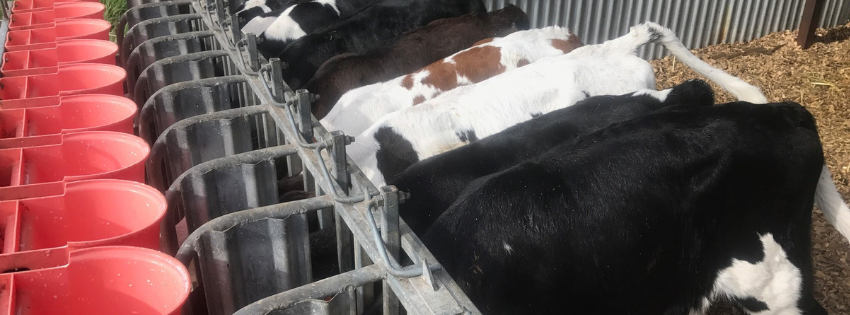Nobody wants to eat off a dirty plate or have their food prepared in a nasty kitchen. The same goes for calves! Here are five tips to help keep your calf kitchen clean and tidy:
1. A Triple Threat – Using the combination of a detergent, disinfectant and sanitizer is a great way to minimize bacterial growth in the calf kitchen. Try keeping all three close to the sink.
Detergents are used to break up organic deposits such as the fat and protein found in both milk and milk replacer, according to Iowa State University Extension and Outreach. Once a surface is cleaned with a detergent, a disinfectant is used to kill microorganism. Using detergents and disinfectants is an effective combination to reduce the bacterial load and prevent the formation of biofilm. A sanitizer helps reduce the number of microorganisms on a surface but is not as effective as a disinfectant.
2. Rinse, Soak, Wash, Repeat! – Cleaning calf and heifer feeding equipment is a vital part of every dairy. Without proper cleaning and sanitation of feeding equipment, disease and illness can quickly spread between calves. Here is the best way to wash the dishes:
Rinse using warm water, about 90 degrees F, to flush away dirt and milk residues off both the inside and outside of feeding equipment. Do not use hot water to rinse.
Soak the calf feeding equipment for 20-30 minutes in a mixture of hot water greater than 130 degrees F and 1% chlorinated alkaline clean in place detergent.
Wash the inside and outside of the feeding equipment with a brush. You can also wash bottles and buckets in an industrial dishwasher. Manually wash bottle nipples with a brush.
Rinse the inside and outside of calf feeding equipment again with warm water that contains 50 ppm of chlorine dioxide.
Allow the equipment to drain and dry before using again. Avoid stacking upside down on a concrete floor or on boards, as this can inhibit proper drying and drainage.
Keep Clutter at Bay – Nobody likes a disorganized work space, especially in the kitchen! Take some time to set up labeled storage bins for various calf care items such as gloves, ear tags and syringes. Pro-tip: Clear bins allow for easy visibility.
Installing rack shelving is also a good way to keep pails and bottles off the counter while also providing adequate airflow to assist with drying.
4. Dehumidify – Have you ever noticed how damp it can sometimes feel in the calf room? Using all of that water to keep equipment clean can cause humidity levels within the calf kitchen to rise. A warm, humid climate creates the perfect condition for mold and mildew to grow. Definitely not something we want to prepare our calves milk in! To minimize the chances of this, try investing in a small dehumidifier to help keep conditions dry.
5. Keep a Cleaning Schedule – Just like the restrooms at the service station, your calf kitchen should have a cleaning schedule taped to the back of your door. Setting aside a regular time to give your milk mixing station a deep clean is a great practice to keep things tidy and calves healthy. Work to put together an easy cleaning routine that can be completed on a regular basis, then hang this calendar up where it will be easy to see.
For more on this topic, read:
- Clean Calf Feeding Equipment in Six Easy Steps
- Calf Facilities: Clean, Clean, Clean
- Calf Health: Is Your Cleaning Protocol Cutting It?
Original article sourced from https://www.dairyherd.com

